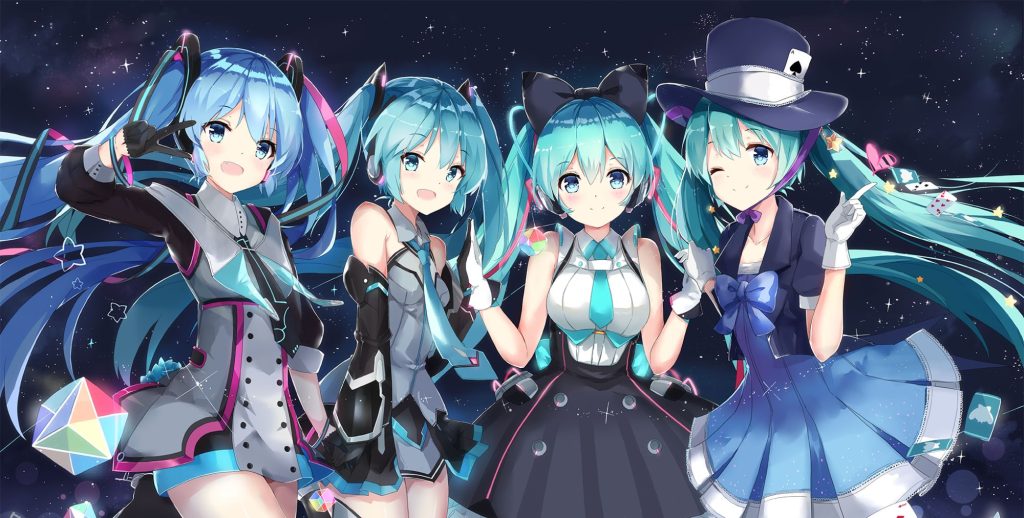“Virtual idols are perfect and can fit the imagined ideals of various netizens. Their virtual nature creates a fantasy, a beautiful and pure world for fans. The deep love these fans have for virtual idols can then be shown by consuming products in real life”
Ji Yuqiao

Identity is a concept that is challenging to define. Erving Goffman suggested that identity is dynamic, stating, ‘Defining social role as the enactment of rights and duties attached to a given status, we can say that a social role will involve one or more parts and that each of these different parts may be presented by the performer on a series of occasions to the same kinds of audience or to an audience of the same persons.’ In modern life, with rapid technological advancement, teenagers now have access to vast amounts of information compared to previous generations, and they enthusiastically use the internet to express their life experiences. The desire for meaningful feedback is particularly acute during adolescence, a time when individuals increasingly crave social and self-acceptance.

With the rise of online streaming, a new type of identity has emergedÔÇövirtual idols. Virtual idols do not require the conventional demands of appearance or talent usually expected of celebrities; instead, anyone can create their ideal idol with just a computer. Through interactions on social media, virtual idols build powerful connections with fans. They have garnered a significant following among young people in Asia. According to a study from China, 92% of virtual idol fans are between the ages of 19 and 30, which indicates that the young generation, particularly Generation Z, forms the core of virtual idol fandom. As a new form of identity for young people, virtual idols allow them to engage without concern for their own appearance or talents, providing an entirely new way for youth to socialize and showcase themselves.
The video features Miku and Asoul, two of the most well-known virtual idols in Asian culture, who combine aspects of Japanese and Korean pop culture. This combination appeals to the consumer’s preference and enables them to swiftly modify their performances and style to cater the tastes of the market.

For example, Asoul, one of the most popular virtual idol groups in China, has amassed around 2 million fans on Bilibili, one of ChinaÔÇÖs largest video platforms. The individuals behind these virtual idols were initially just young university students who loved anime but were hesitant to perform in public. Through virtual idols, they realized their dreams of becoming idols themselves. This experience has also fostered a sense of group belonging among young people, allowing them to form new community relationships.
Overall, online identity consists of a carefully controlled front-end presentation and a more intimate back-end, as seen in virtual idols, and I believe there will be many more of them in the future to meet the desire of young people. For most people, hiding themselves is not about isolatingthemselves off, but rather trying to show the best of themselves in order to gain the approval ofothers.
Reference
Buckingham, D. (2007). Youth, Identity, and Digital Media. [online] library.oapen.org. The MIT Press. Available at: https://library.oapen.org/handle/20.500.12657/26085.
Goffman, E. (1959). The Presentation of Self in Everyday Life. New York: Doubleday.
ÔÇîJi Yuqiao (2021). www.globaltimes.cn. (n.d.). ChinaÔÇÖs virtual idol industry booming, attracts more than 300 million fans – Global Times. [online] Available at: https://www.globaltimes.cn/page/202101/1214468.shtml.
ÔÇî


I like how anyone is able to become an idol, you show examples with pictures of K/DA, Miku and Asoul. I agree that there is a hidden persona behind the screens, anyone is able to become an idol. Technology is evolving making a wide range of people able to access to electronic devices. People act different online, having talent to talk to online people without worrying about their actual appearance, boosting confidence to the idols. It makes us think to think of people’s personalities more than about their visual looks. You could have potentially researched why people become idols, or talked more about a specific group mentioned like how K/DA is a group created by League of Legends. Overall, this was an interesting read about the digital world personas.
Hi Wenze, I really like your example, and I think it beautifully illustrates how everyone has multiple facets to their personality. Perhaps, in some ways, these created virtual idol characters represent peopleÔÇÖs yearning for an ideal version of themselvesÔÇöa side that is usually hidden. Beyond the virtual realm, idols in the real world also symbolize fame, beauty, popularity, and even wealth, which are qualities that many aspire to have. In the virtual world, however, people can achieve everything they desire in a utopian sense, revealing their innermost selves without reservation through the persona of a virtual idol. This may also be why idols in the real world attract such admiration.
I think your example is a good one, and the article is a deep exploration of how Asian teenagers use identity to interact with idol culture, emphasizing the complex interplay between culture and self-identity.